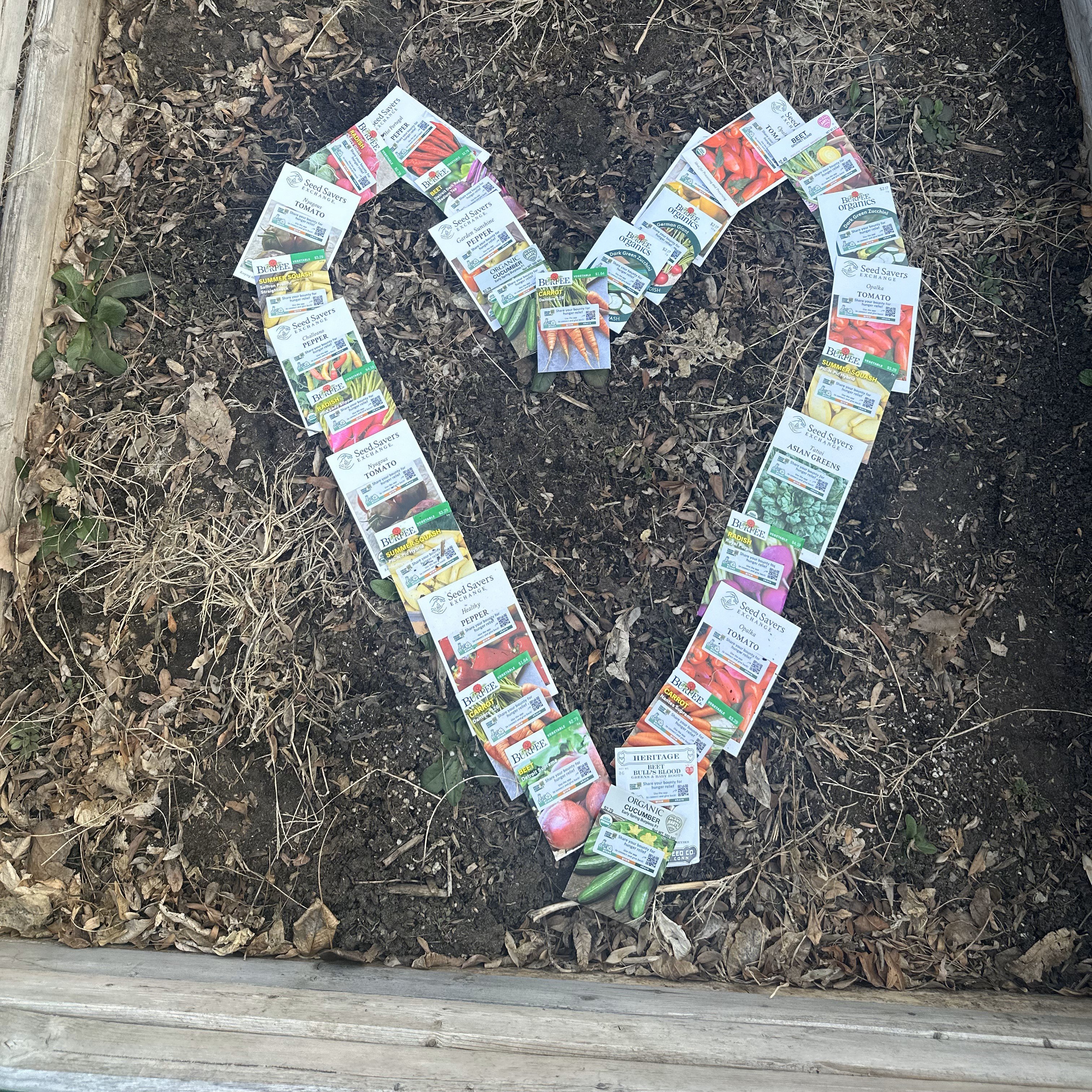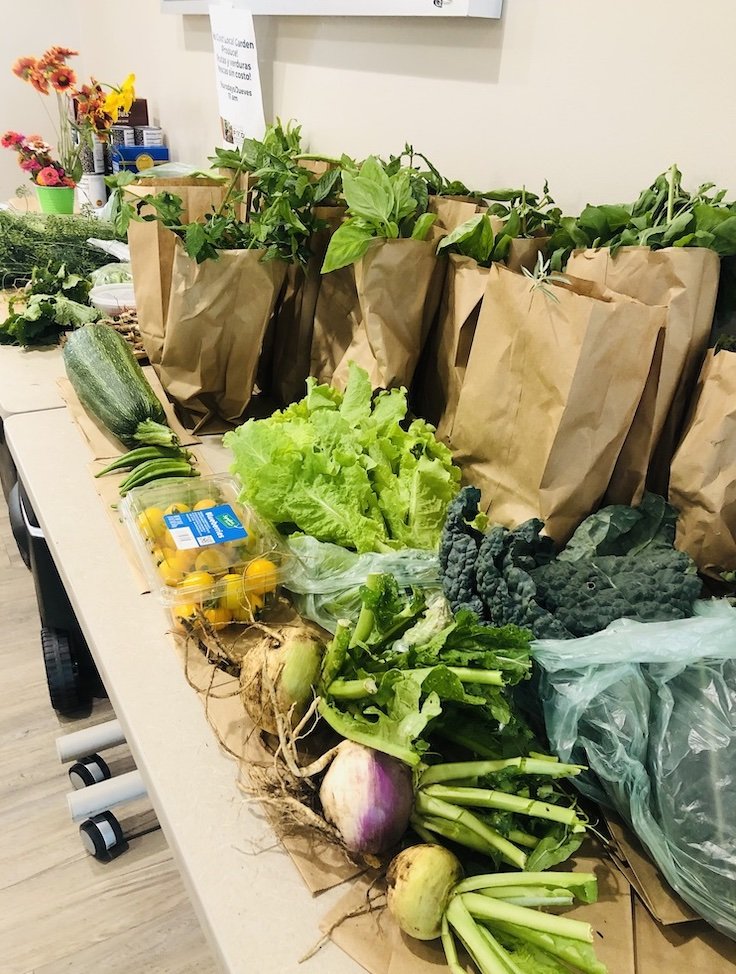The best mulch to elevate your garden game
Guest Contributor: Cassey Anderson, Horticulture Agent, Colorado State University Extension

Wondering how you can improve your vegetable garden this year? I’ve got one suggestion: mulch. There are many reasons that using mulch can be beneficial. Mulch can help keep soils cool, or in some instances it can warm the soil. Mulch can reduce weed pressure and can keep moisture in the soil. Now all of this sounds great, right? Here are some things to know and ways to guarantee success.
No mulch – there is nothing wrong with not using mulch. You know what your plants are, where they are growing and how they are doing. Many plants, especially when planted in a block style planting, will do very well by themselves without the addition of mulch. Plus, when not using mulch you don’t have to worry about an extra step, or additional responsibility in the early and late season, or to think about when to best apply the mulch. You may need to be a little more conscious about keeping on top of weeding and watering when not using mulch.
Grass – for many with a small or even large lawn, grass clippings can be one of the easiest forms of mulch for the vegetable garden. You lay the clippings down gradually after mowing, being sure to let it dry in thin (around 1”) layers between applications. Applying fresh clippings in too thick of a layer can lead to matting and smelly mulch. Grass clipping mulch can likely be incorporated into the soil at the end of the season without any complications. Be sure to wait an appropriate amount before applying grass mulch if you have treated your grass with herbicides (usually 4-6 weeks), and if you get grass from elsewhere, ask what it has been treated with.
Grass + newspaper – for additional speed to weed protection you can add a layer of newspaper under your grass clipping mulch. You can use black and white or printed matte newspaper; they use biodegradable inks. It may be best to avoid the glossy inserts that can come with a newspaper, however. You may need to weigh the newspaper down or spray it with a little bit of water to keep it from blowing away when you first install it.

Straw – Straw is what many people picture when they imagine a vegetable garden with mulch, for good reason. Straw can act as a great insulator, prevents weed seed from germinating, and doesn’t blow away very easily once placed down since it can tangle up with other straw pieces. If using straw be sure to put it down after any seeds you’re sowing directly have germinated and begun to grow, as it will prevent vegetable and weed seeds from germinating once planted. If possible, try to find certified organic straw to use, as conventionally grown straw may have been treated with herbicides that can persist in the straw and will be problematic for your vegetable growth (see: https://extension.oregonstate.edu/crop-production/soil/herbicide-carryover-hay-manure-compost-grass-clippings for more information).

Hay – Due to some of the concerns with straw I have known gardeners to use hay for mulching in their garden beds, although it’s not guaranteed that hay will be free of the persistent herbicides as well. Hay can work well as a much, but because hay often still has seed heads present you may get “grass” seeds growing as the mulch breaks down over the season. If you don’t mind pulling them as they come up hay can be a good, low-cost option!
Plastic – plastic mulch is an option that can have many benefits, with some caveats. You want to be sure that you are using UV resistant plastic. The inexpensive plastic painters’ sheets from big box hardware stores are NOT UV resistant and will shatter after a season of full sun leaving you to vacuum in your vegetable garden. There are many different colors and uses for plastic mulch. Plastic mulch can almost eliminate weeds, can be re-used for 2-3 seasons, and is fairly easy to manage once put down. However, disposal can be an issue, and it isn’t always as good for block planted crops such as carrots, lettuce or other densely planted crops. If putting plastic mulch down be sure to cut a circle out for any crop you’re working with rather than slashing an X, as plastic resting on the plant could burn the plant. Check if there are local recycling initiatives to accept used plastic mulch for recycling and use it for as long as possible.

Different colors of plastic mulch have been shown to have differing benefits:
Clear – does not absorb a lot of solar radiation but transmits it (like a greenhouse!) so great for warming soils early in the season. Weeds will still grow so clear plastic won’t help with weed prevention but may act to solarize/sterilize if there are no plants in the space and it’s left for 6+ weeks.
Black – absorbs the most UV energy, warms the soil somewhat, but not a lot (by 3-5 degrees F).

White – cools the soil slightly, about 2 degrees F. Can help with establishing plants in peak heat of the summer.
Silver – used primarily to deter insect pests such as aphids and whitefly, will also cool the soil compared to non-covered soil.
Others – research still needed but some evident shows that red may increase fruit yield in zucchini, melons, and tomatoes. Green has been shown to encourage earlier ripening of cantaloupe. Blue mulch has been shown to increase fruit production of cantaloupe, summer squash, and cucumbers. Brown mulch warms the soil better than black, and controls weeds.
Biodegradable – There are a few companies that are making biodegradable cornstarch plastic mulches. These will truly break down after a season of use. Be sure to read all available material about how to manage end-of-season materials. This can be a great alternative to oil-based plastic mulch, but we are early in development for varieties and options.
Paper mulch – some companies also produce a thick paper mulch. It comes in a long roll kind of like the craft paper you used in elementary school art, however the paper is much thicker. It can be challenging to apply and may rip, but when used correctly can give very good weed control. Be sure to secure down any edges so the paper doesn’t catch the wind and blow/rip. Paper mulches will likely only last for one season before they begin to break down and so should be used accordingly.

Notice there are a few types of mulch I did not include in this list. Wood chips, sawdust, rubber mulch, or rock mulch are not great choices for vegetable garden beds. Wood chips can work well in the season but can be too easily incorporated into the soil when preparing soil, planting etc. so it is better to avoid in the beds. In inter-bed rows wood mulch can be a great choice! Sawdust sounds good but can impede airflow into the soil and should not be incorporated into the soil. Rubber mulch may sound tempting since it does not break down, but rubber is not a material you want near your plants, it can be harmful to our health, and it smells bad! Finally, rock much will have some of the same issues as wood chips, plus it is heavy and can be challenging to move around. With so many other options you should be able to find the mulch right for you!
Hopefully this helps you make some decisions about what mulch to use and why! If you have additional questions reach out to your local County Extension Office!
Ready to get started? Get the Must-Have Gear for starting from seed.
Plant to share! See the Top 5 vegetables requested by hunger relief organizations.
Gardening in Colorado? Check out Grow & Give and in particular our Colorado Vegetable Guide for more crop information on all of the above plants.
What if every gardener shared just a little?
One small donation can have a tremendous impact. Just imagine, if every gardener planted one extra plant to share, or donated just a pound from the garden. Collectively, we would have an abundant source of fresh, healthy produce available to be distributed to families experiencing food insecurity in our own communities! The free Fresh Food Connect mobile app connects you to a local hunger relief program, then manages and tracks your donations of homegrown produce throughout the season. Download the app today!



